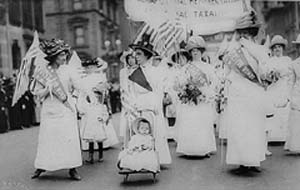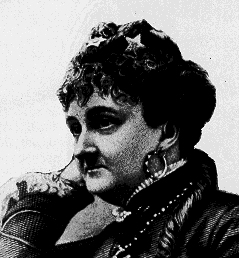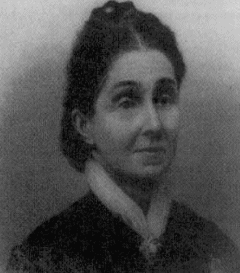|
During debates on the Reconstruction Amendments which extended the vote to ex-slaves (through the 15th Amendment), suffragists pushed hard for "universal suffrage," but they never had a chance. In 1872, a suffragists brought a series of court challenges designed to test whether voting was a "privilege" of "U. S. citizenship" now belonging to women by virtue of the recently adopted 14th Amendment. One such challenge grew out of a criminal prosecution of Susan B. Anthony for illegally voting in the 1872 election. The first case to make its way to the Supreme Court, however, was Minor vs Happersett (1875). In Minor, a unanimous Court rejected the argument that either the privileges and immunities clause or the equal protection clause of the 14th Amendment extended the vote to women. Following Minor, suffragists turned their attention from the courts to the states and to Congress. In 1878, a constitutional amendment was proposed that provided "The right of citizens to vote shall not be abridged by the United States or by any State on account of sex." This same amendment would be introduced in every session of Congress for the next 41 years. In July 1890, the Territory of Wyoming, which allowed women to vote, was admitted as a state. Wyoming became the first state with women suffrage. By 1900, Utah, Colorado, and Idaho joined Wyoming in allowing women to vote. In 1912, Theodore Roosevelt's Progressive (Bull Moose) Party became the first national political party to have a plank supporting women suffrage. The tide was beginning to turn. In May, 1919,
the necessary
two-thirds vote in favor of the women suffrage amendment was finally
mustered
in Congress, and the proposed amendment was sent to the states for
ratification.
By July 1920, with a number of primarily southern states adamantly
opposed
to the amendment, it all came down to Tennessee. It appeared that
the amendment might fail by one vote in the Tennessee house, but
twenty-four-year-old
Harry Burns surprised observers by casting the deciding vote for
ratification.
At the time of his vote, Burns had in his pocket a letter he had
received
from his mother urging him, "Don't forget to be a good boy" and "vote
for
suffrage." Women had finally won the vote.
|
Passed by Congress June 4, 1919. Ratified August 18, 1920. Section 1: The right of citizens of the United States to vote shall not be denied or abridged by the United States or by any State on account of sex. Section 2: Congress shall have
power
to enforce this article by appropriate legislation.  Suffragist parade (1915) Readings
Congress and Women's Suffrage
The Ratification Fight: "Women Suffrage and the Nineteenth Amendment" N.Y.
Times Articles on Ratification Cases
United
States vs. Susan B. Anthony (1873) Links Image:
Tennessee Ratification Document
|


